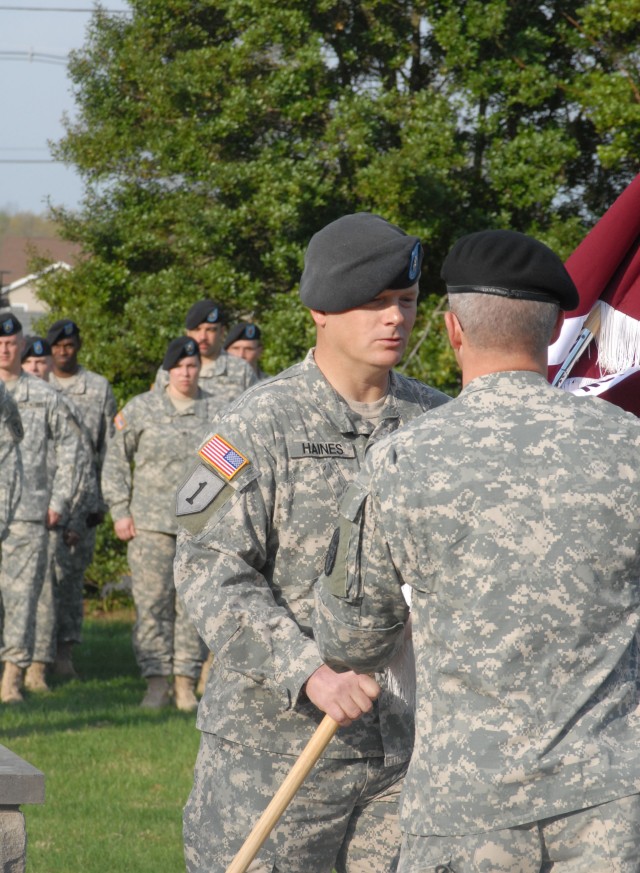When the Warrior Transition Unit's battalion commander tells his troops, "I know how you feel," they need to know that's not lip service.
In 2006, Lt. Col. David Haines was on patrol in Iraq when his humvee was hit by an explosively formed projectile. Essentially, the projectiles acted like shrapnel, ripping through the front and back of the vehicle, injuring all its occupants. Haines was medically evacuated to Landstuhl Medical Center in Germany.
After three years as a patient in the warrior transition system and more than 30 surgeries, Haines has returned to active duty. Although he is not quite ready for bicycle racing - one of his favorite pastimes before the accident - he is biking and has met most of his rehabilitation goals.
"I hope that my example as somebody who has gone successfully through (the warrior transition system) and returned to duty will help some of the other Soldiers through it," he said.
Because of his experience, Haines has some insight that other commanders probably don't bring to their leadership styles.
While he was still in the early days of his recuperation, Haines said he was interviewed by a TV crew which was documenting the orthopedic care Soldiers receive. The goal was to educate civilian orthopedists who generally lag behind the military's advances, particularly in traumatic amputations.
"Our medical system in the military is much maligned and that's unfair," he said. "We don't often share the success stories."
A case in point is Haines himself. Soon after his arrival at Fort Knox, he was referred to Kleinert, Kutz, and Associates in Louisville. The practice has an international reputation for its innovative hand surgeries, that include entire hand transplants. Haines said his physician pored over x-rays and did a thorough examination of his hand. Then he surprised Haines with his report.
"You know what' Most people who come in here and have been worked on by other doctors, I have to set them up to do surgery to undo what the other guy did. But in your case, this surgeon did everything I would have done," he said.
Haines is more than pleased to report his corrective surgeries were performed at Walter Reed.
"It's not all about me, but about a guy who had an incident and can share a story that maybe helps other people," Haines emphasized.
While Haines has knowledge of the system and can empathize, he may also bring a disadvantage to the command role.
"I'll look at the hardship of what I've been through and the hardship of people that I know who have been seriously wounded and I might get frustrated with guys that I think aren't making the effort to get to a point that I think they should get to," Haines acknowledged. "That may be a disadvantage and probably one of the things I'll have to watch in myself."
The command message Haines wants to impart to wounded warriors of WTB includes encouragement as well as a caution.
"I understand what they're going through. We're going to try to get them all the resources that they require to either return to duty or be a productive person in the civilian world," Haines said. "But on the negative side, your medical condition is not a reason to forget you're a Soldier.
"Many who have lost so much are really inspirational. These are guys who want to stay in the Army and continue to serve where they can; these guys aren't going to let these injuries bring them down.
"I hope - as the commander - I can pay back a system that has treated me very well."


Social Sharing